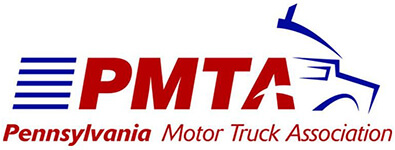
Check Your Height, Know It’s Right
A PennDOT Campaign for Preventing Bridge Strikes
PennDOT has launched the “Check Your Height, Know It’s Right” public awareness campaign on July 22, 2025, as part of a multi-state effort through the Eastern Transportation Coalition involving 18 states plus Washington, D.C.
From 2013 through 2023, Pennsylvania recorded more than 600 bridge strikes by vehicles that exceeded posted clearance limits—an average of about 60 incidents per year. PennDOT officials noted that each bridge hit damages infrastructure, causes traffic delays, and puts emergency responders and the public at risk. It also diverts funding from needed projects.
The campaign addresses both CDL holders and non-commercial drivers in delivery vans, moving trucks, leased trucks, RVs, and box trucks—basically, any vehicle that might exceed typical bridge heights.
Key messages of “Check Your Height, Know It’s Right” include:
1. Know your vehicle’s actual loaded height.
2. Obey posted clearance signs—do not rely solely on GPS navigation.
3. Use resources like the 511PA Low Bridge map layer to pre-check routes for any structure under 13 ft 6 in clearance.
Actionable Guidance for Trucking Companies
To help carriers turn this campaign message into everyday practice, here are some steps your company can take to reduce the risk of costly bridge strikes and keep your drivers and equipment safe.
1. Know the Height — Every Trip
· Always measure the fully loaded vehicle height—not just the empty trailer.
· Post a visible reminder of maximum height inside the cab.
2. Use Truck-Aware Routing Tools
· Avoid consumer GPS that doesn’t include vertical clearance data.
· Provide or mandate tools like Rand McNally, Garmin Dezl, Trucker Path, PC*Miler, or ELD systems with clearance-aware routing.
· Consider other real-time technologies commercially available to eliminate bridge strikes, often tied to ELDs.
3. Train Drivers & Dispatchers to Double-Check Routes
· Dispatchers should review last-mile delivery routes for potential low bridges.
· Teach drivers to stop and reassess when in doubt.
4. Follow permit lane guidelines and escort instructions carefully.
· Oversized loads must stay in designated lanes to maintain safe clearance — pilot vehicles must stay alert and avoid distractions.
5. Promote Situational Awareness
· Encourage drivers to scan for posted clearance signs, especially on older routes or urban underpasses.
· Remind them that GPS may miss low bridges—always respect physical signage.
5. Establish a Reporting Policy
· Put in place a no-blame reporting process for near-misses and strikes.
· Analyze incidents with dash cam or telematics data to prevent reoccurrence.
6. Include Bridge Safety in Training and Safety Talks
· Make bridge strike prevention a regular topic during onboarding, quarterly safety meetings, and refresher training.
· Share real strike examples to reinforce the message.
7. Use PennDOT & Industry Tools
· Encourage regular use of 511PA’s Low Bridge map layer and the app’s drive mode features when drivers designate their vehicle as commercial.
· Supplement with tools or map layers from other states when operating in unfamiliar areas.
8. Understand the Cost Implications
· Even one bridge strike can cost your company significant repair and insurance expenses, disrupt operations, or lead to contractual or safety violations.
With PennDOT’s new “Check Your Height, Know It’s Right” campaign now underway, now’s a good time to ensure this mindset is embedded in training, routing policies, and everyday operations. By doing so, trucking companies can vastly reduce the risk of bridge strikes—protecting drivers, infrastructure, and their bottom line.
